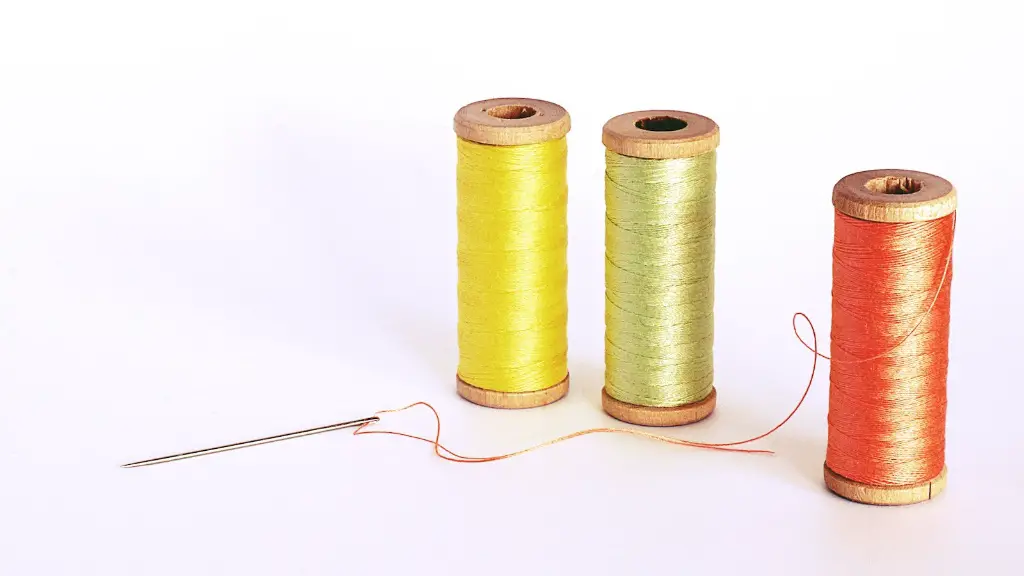Threading a Hand Sewing Machine
Threading a hand sewing machine correctly can be an intimidating task for beginners. However, with clear instructions and correct techniques, you can easily thread and use the machine. This guide will provide the steps and resources to help you efficiently thread your hand sewing machine.
To begin threading your machine, you will need to have the appropriate supplies. These include thread, needle, and bobbin. You will also need to familiarize yourself with the parts of the machine. This includes the thread guides, needle, bobbin case, and tension discs.
Steps for Threading a Hand Sewing Machine
Once you have the supplies and have identified the different parts of the machine, threading the machine will become much easier. The steps below will guide you through the process of threading your hand sewing machine.
Step 1: Insert the needle into the needle holder. Make sure the flat side of the needle is facing the back of the machine.
Step 2: Thread the needle from front to back. Double check that the thread is passing through the eye of the needle.
Step 3: Pull thread to the back of the machine and bring it up through the thread guide. Then, pass it behind the feed dog, and thread the needle holder through the slot.
Step 4: Now, thread the lower thread guide from left to right. Pull the thread up through this guide. Then, thread it through the take-up lever, behind the thread loop, and down into the thread tension dial.
Step 5: Loosen the thumbscrew on the bobbin case, and insert the bobbin onto the bobbin holder with the thread inside. Pull the thread through the slit in the bobbin case.
Step 6: Finally, draw the thread up through the slit in the needle plate. Draw it around the small hook at the top, and then pull it to the left. Make sure you leave some of the thread at the beginning of the machine.
Tips for Threading a Hand Sewing Machine
Before you start to sew, make sure you have properly threaded your machine. Follow the steps above and these tips to easily thread your hand sewing machine:
Tip 1: The bobbin thread and top thread should be the same color and type. This will ensure the stitches look neat and the machine will run smoothly.
Tip 2: Threading the machine should be done slowly and carefully in order to avoid making mistakes and breaking the needle.
Tip 3: Test the tension of the thread on a piece of scrap fabric. This will ensure that your stitches will be even, and not too loose or too tight.
Things to Consider When Threading a Hand Sewing Machine
Threading your machine is not something to rush through. Taking your time and doing it right can save you time and money in the long run. When it comes to threading a hand sewing machine, there are several important things to consider:
Maintenance: Regular maintenance is vital in order to keep your machine working efficiently. The machine should be oiled and cleaned regularly to ensure it is working properly.
Thread and Needle: Make sure you are using the right type of thread and needle for your project. The wrong size of needle or thread can cause problems and lead to poor quality stitching.
Instructions: Read the instructions for the machine carefully and follow them. Doing so can help you avoid any potential problems. Do not be afraid to ask for help if you need it.
How to Troubleshoot Threading Problems
Despite following these instructions and taking extra care to thread your machine, your machine can still experience issues. If you are having trouble with the machine, here are some troubleshooting tips that may help.
Check the Threading: Do not assume your machine is threaded correctly. Carefully recheck that you followed all the steps above.
Check the Tension: Make sure the upper tension disc, bobbin case, and upper tension are all in the correct positions.
Check the Needle: Inspect the needle to make sure it is properly inserted and not bent. Make sure you are using the right type of needle for your fabric and project.
How to Troubleshoot Stitching Problems
In most cases, stitching problems are caused by the machine threading being incorrect. However, if the threading is correct, there may be other issues causing the problems. Here are some tips to troubleshoot stitching problems:
Check the Feed Dog: The feed dog is responsible for the machine’s stitches being even. If the feed dog is not working correctly, the stitches may be uneven or loopy.
Check the Needle and Thread: Make sure the needle is in good condition and the thread is new. Old and worn-out needles and thread can cause problems with stitching.
Check the Fabric: Make sure the fabric is flat and not bunched up. The fabric should also be compatible with the type of thread and needle you are using.
Conclusion
Threading a hand sewing machine can be a tedious process, but with some patience and the steps outlined in this guide, you can easily thread your machine and get sewing. Be mindful of the parts of the machine, and carefully follow the steps above. And, if you encounter any issues while threading, apply the troubleshooting tips provided to help solve your problems.





